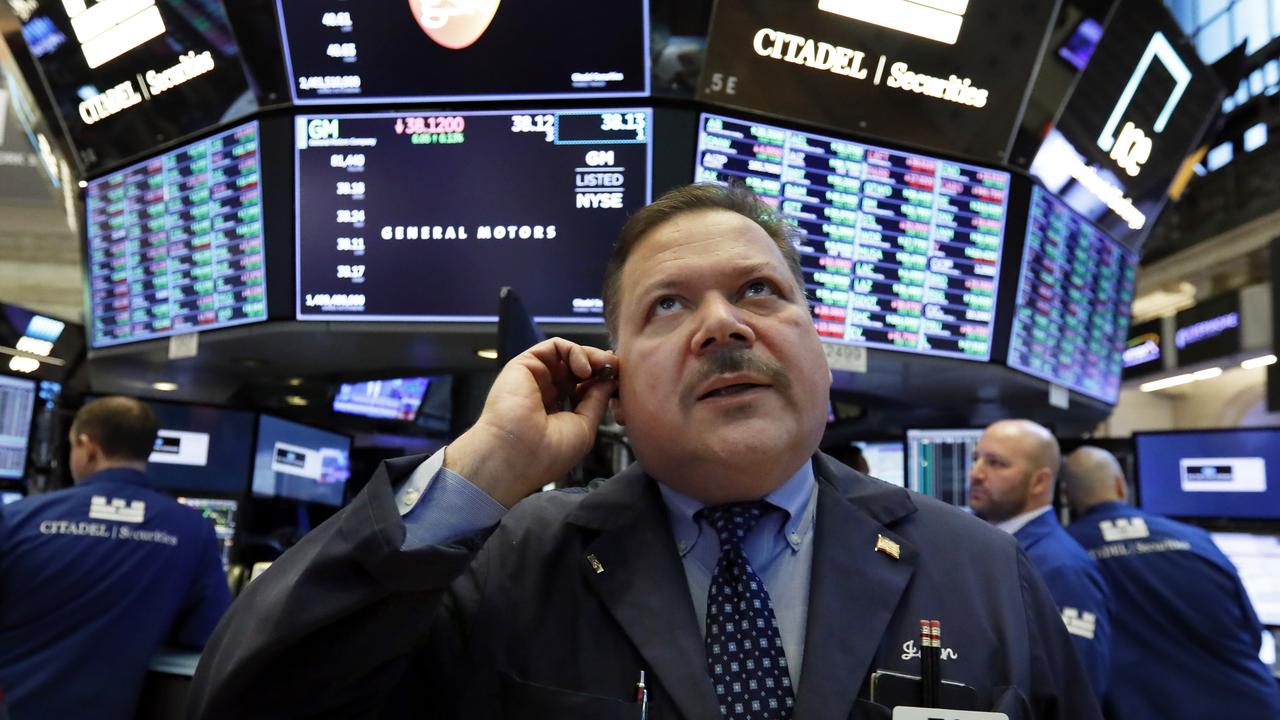Stocks face test amid housing correction talk
After S&P/ASX 200 fall of 2.5pc in the past week, the local market looks set for more challenges.

A 2.5 per cent fall in the benchmark S&P/ASX 200 over the past week was its worst since the lead-up to the Brexit vote in June. The energy and materials sectors led falls as commodity prices tumbled, but the sell-off was also broadbased as the earnings season showed the that Australian sharemarket is highly dependent on record low interest rates to justify its lofty valuation.
After hitting a near decade-high of 16.8 times expected earnings per share for the year ahead, the market’s PE ratio has fallen to 16.2 times — still well above the decade average of 13.6.
With Australia’s cash rate at a record low of 1.5 per cent and the dividend yield of the sharemarket near 4.5 per cent, the yield advantage of shares versus deposits has never been higher. And the Reserve Bank is widely expected to cut rates again in the year ahead, possibly to as low as 1 per cent, forcing more investors to seek income from the sharemarket.
Central banks in Japan and Europe have indicated they are prepared to cut their interest rates further into negative territory, but global markets could face a hiccup if the US Federal Reserve lifts rates, sparking a rise in US bond yields. Much will depend on US employment data overnight and whether the US dollar rises enough to further delay the resumption of US rate rises.
Either way, with Fed chief Janet Yellen saying the case for US interest rate increases has “strengthened”, there will be a lot of focus on the Fed’s interest rate decision in the early hours of Thursday, September 22.
A day earlier, the Bank of Japan will hand down a review of its monetary policy and could cut interest rates again.
Certainly while not a disaster, the reporting season didn’t give investors the confidence that earnings are about to accelerate enough to make the overall sharemarket look attractive at current levels.
“We felt results season offered limited cause for meaningful upgrades for the domestic-linked industrials,” Morgan Stanley strategists Nathan Lim and Ewa Turek said. “Overall, there were more misses this season at the revenue line, while more beats in dividend per share.”
The US investment bank switched to an underweight recommendation on CBA this week, arguing that the bank’s premium valuation was becoming harder to justify. At the same time it pushed ANZ to overweight on the back of its turnaround strategy and cheaper valuation.
And despite the pullback in commodity prices this week, Morgan Stanley remains constructive on the resources sector, based on the view that commodity prices have seen their worst levels of the cycle and the supply outlook is a bit more constrained, while China’s growth rate is expected to fade rather than collapse after this year’s stimulus efforts.
In contrast, the earnings season offered little for the banks in terms of growth, while confirming risks around capital and the credit cycle. Consumer discretionary retail earnings are in reasonable shape, according to Morgan Stanley, but while there is clear evidence that rate cuts have extended the housing cycle, they remain wary that conditions will soften with few levers to mitigate an eventual downturn.
CLSA analysts took the housing market concerns to a whole new level on Friday with a 57-page report detailing their view that the housing cycle has peaked amid weak affordability and high household debt, despite being held aloft by foreign capital.
Tightening bank credit standards are the likely catalyst for a correction that features defaults among small developers and a sharp contraction in apartment construction, according to CLSA.
While this is unlikely to result in sharp price declines in other regions, household debt of 122 per cent of GDP and a price-to-income ratio of up to 12 times increases the risk of a “worst-case scenario” that sees price contagion spread to other regions, resulting in a sharp fall in house prices and eventual recession.







The Australian market could be in for a testing time this month.